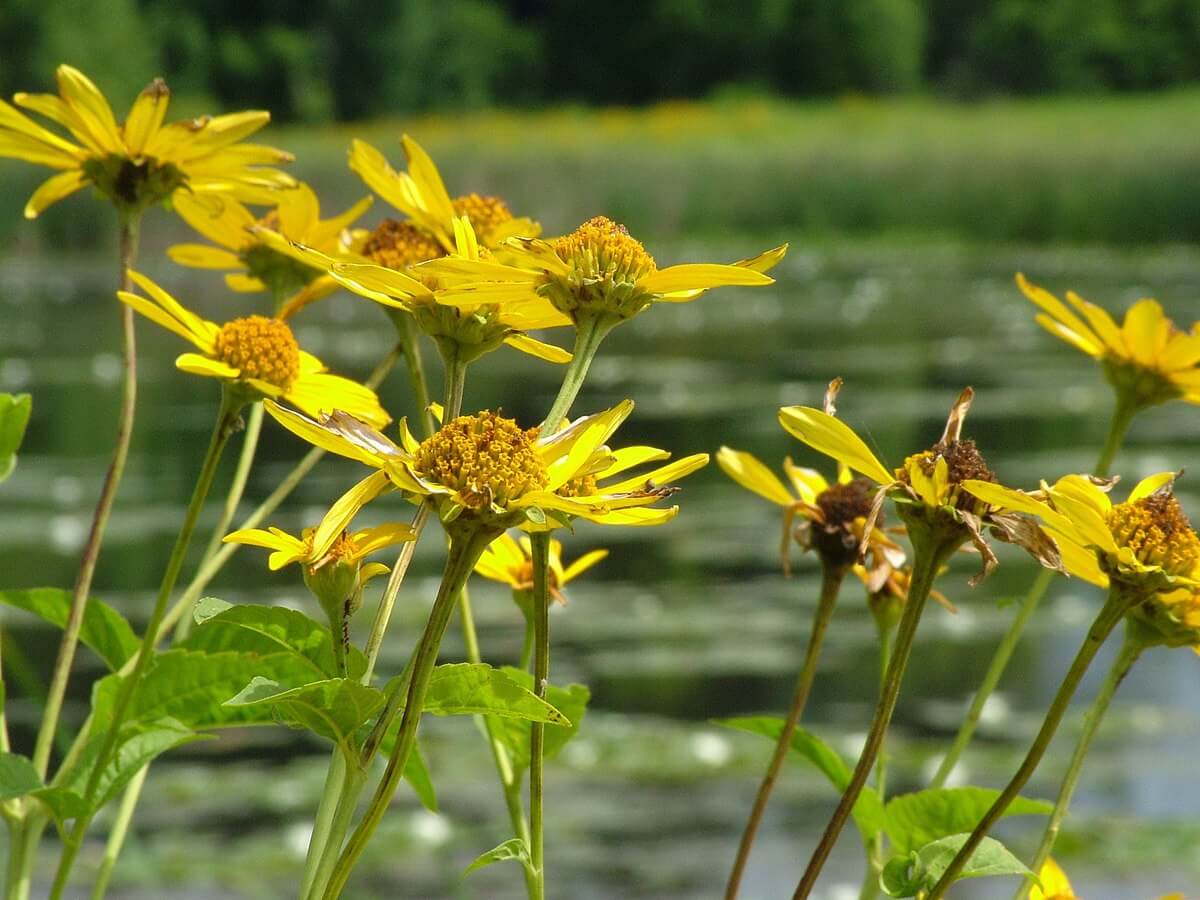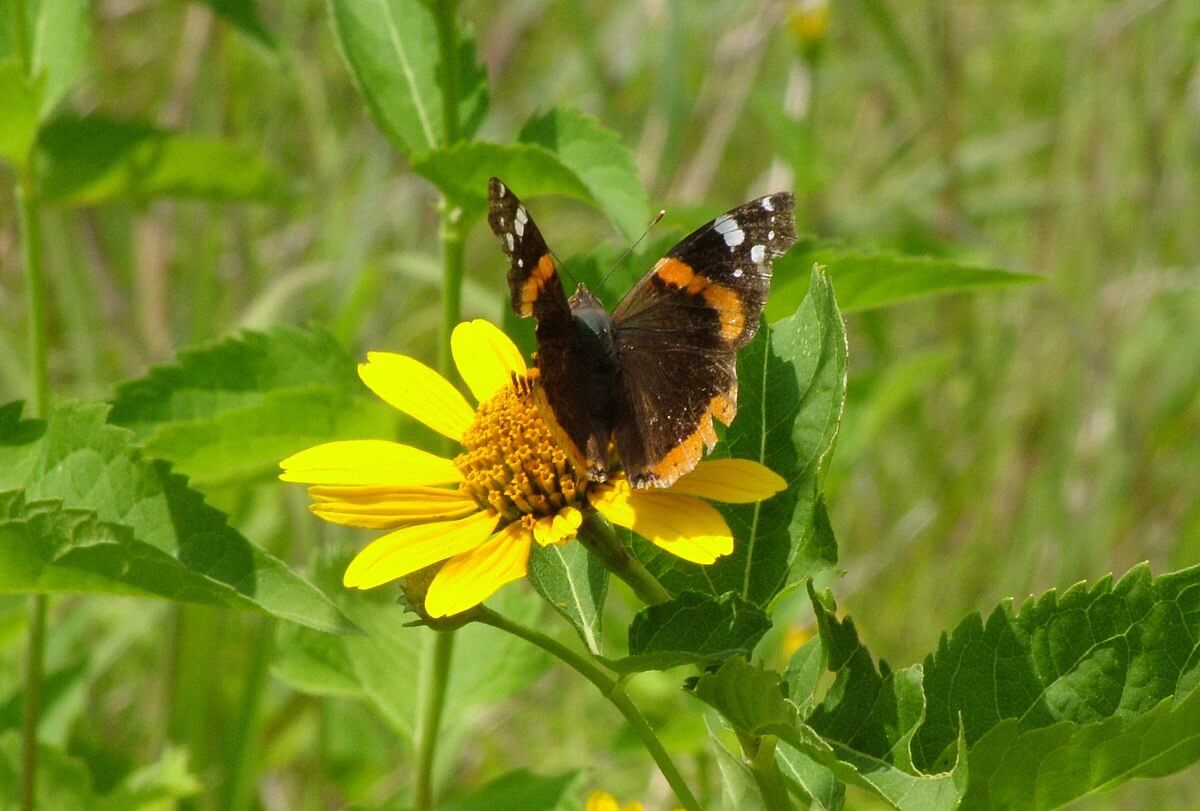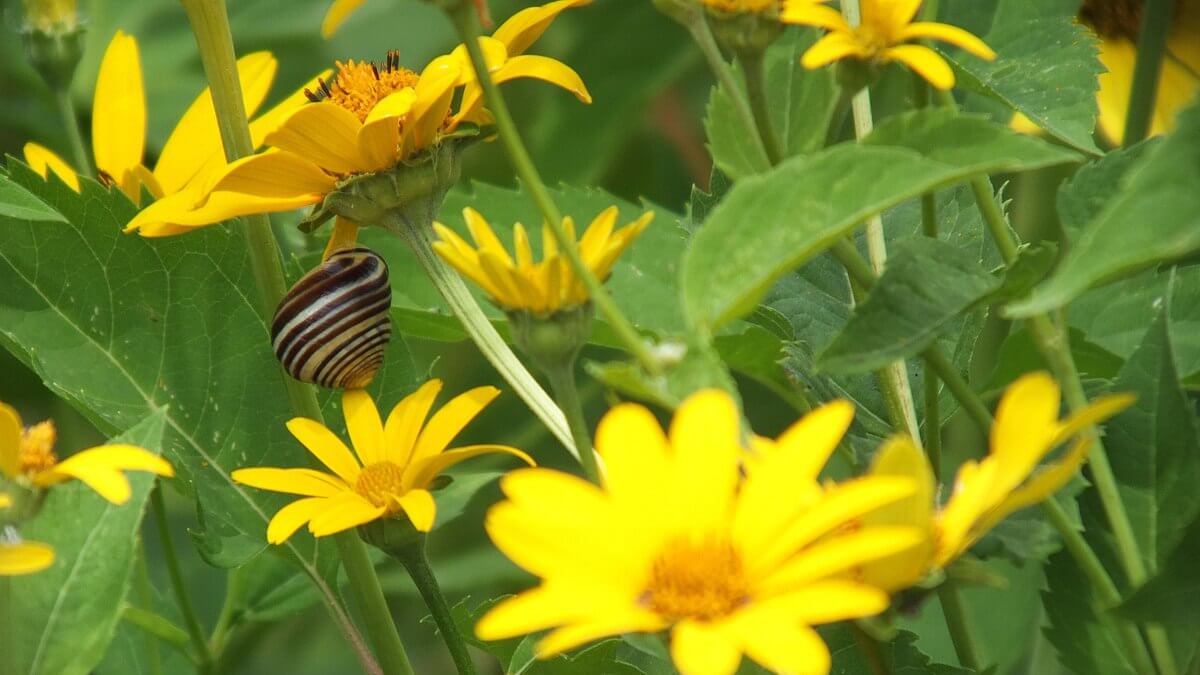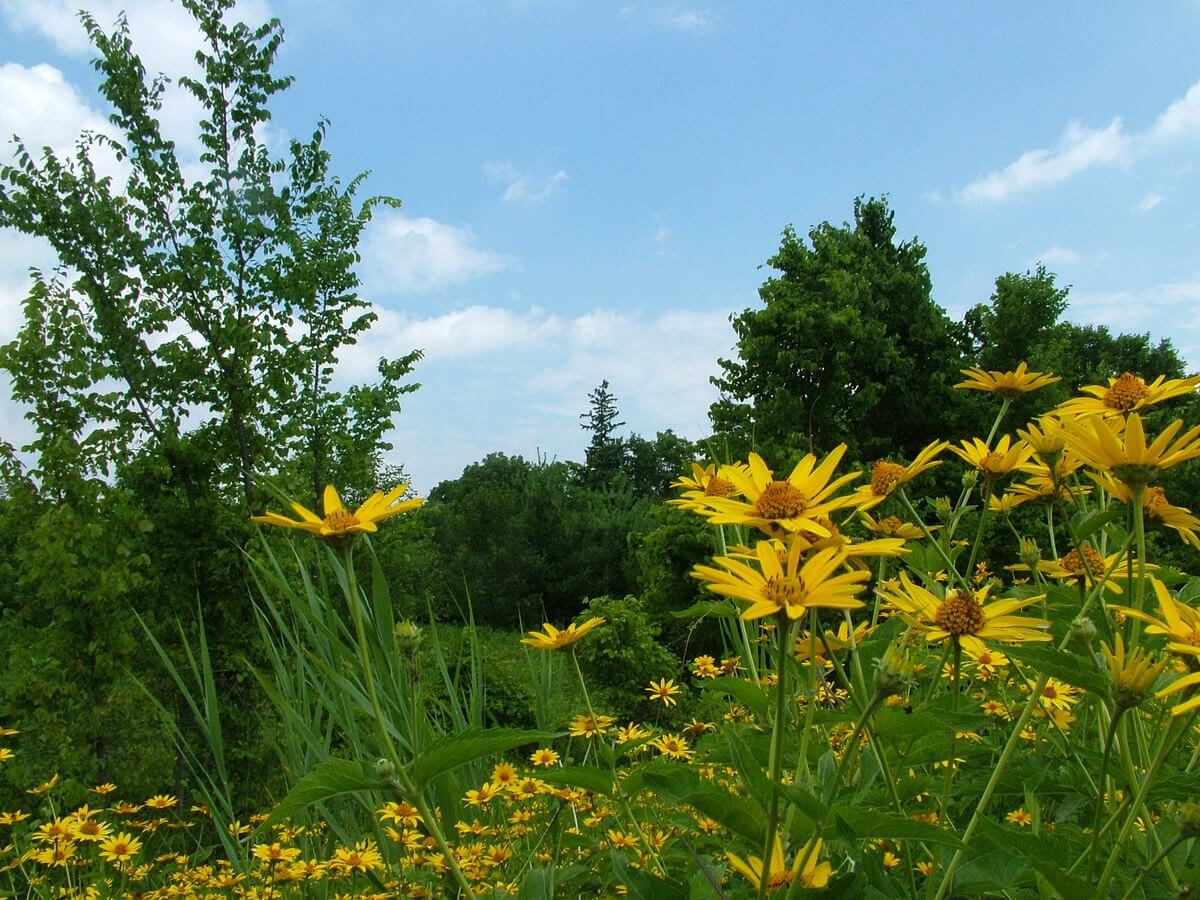Sunchokes growing wild at Lower Reesor Pond in Toronto
How beautiful is a sprawling drift of Sunchokes fading into the distance! That is just what we found when Bob and I visited Lower Reesor Pond in northeast Toronto. This native species of sunflower goes by many different names including Sunchokes, Sunroot or Earth Apple.
I have always referred to these perennial flowers as Sunchokes, and once so admired their bright blooms, tall height (5-10 feet) and hardy nature (drought and heat tolerant) as to have planted some in my own flower garden. What a mistake! This species of wild sunflower is so pernicious that it nearly crowded out my other flowers and simply overshadowed them. When it came time to remove the Sunchokes from my flowerbeds, it required almost sifting the soil to remove every bit of the tubers for even a small piece of one tuber can lead to between 75-200 new tubers and plants. Yikes!
Lower Reesor Pond is bordered by a berm on both the west and north sides where Sunchokes have spread into nice-sized colonies. What a perfect place for the plants to multiply since there is no need to restrict their spread, and the mature flower heads of these plants provide seeds for many seed-eating birds. On my own property, I used to enjoy watching the American Goldfinches as they swayed atop a ripe flower and plucked seeds to their heart’s content.
Where Sunchokes are well established, they also supply nectar for many different species of butterfly such as this Red Admiral seen the day we explored the pond environs…
and provide habitat for other creatures such as this Snail seen hugging one of the flower stems. The leaves of Sunchokes are less desirable to Snails because they have a rough and hairy texture. I used to find, when they were growing in my garden, that the leaves would irritate my skin making it itchy and red.
Also known as Jerusalem Artichokes, this species of plant actually has no connection with Jerusalem nor is it a type of artichoke. The plants have, however, been successfully grown as a food crop because their tubers can be eaten. Even before Europeans came to North America, indigenous people used the tubers like potatoes since it is a root vegetable with a light, crisp texture. I have eaten sunchoke tubers, albeit those purchased from a farmer’s market, and thoroughly enjoyed them. My own were never substantial enough in size to warrant cooking. It is necessary to dig the tubers from the ground each fall and replant in the spring if you want them to grow to any usable size. That wasn’t going to happen at my place.
For Bob and me, it is enough that these native plants grow with abandon in Ontario’s countryside made possible because they can tolerate the vagaries of our summer weather. They so beautifully transform otherwise green fields of grass into a expansive wildflower garden. The birds, and bees and butterflies all benefit, and there by Reesor Pond, the height of the plants served as an excellent blind when Bob and I were scanning for waterbirds around the pond. Between the pretty scenery and bird sightings, we had a successful day.
Frame To Frame – Bob and Jean







